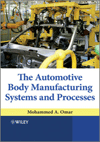Perhaps the most troubling trend to emerge from our annual Assembly Top 50 report is a sharp decline in R&D spending among the country's leading manufacturers.
This year’s Assembly Top 50 report made the impact of the past recession devastatingly clear. Total sales for the Top 50 were down 11 percent. Thirty-six companies in the Top 50 reported lower sales in 2009 than they did in 2008, and 26 members of the Top 50 earned less profit. Capital spending was slashed, and hundreds of thousands of people worldwide lost their jobs.
As bad as those numbers are, perhaps the most troubling trend to emerge from our spreadsheets is a sharp decline in R&D spending. As part of our exclusive analysis, we looked at R&D spending for 47 of the Top 50 manufacturers for the past five years. (R&D figures were unavailable for No. 32 Flextronics International Ltd., No. 32 Magna International Inc. and No. 40 Whirlpool Corp.)
As a group, the Top 50 increased R&D spending every year from 2002 to 2008. The following year, however, R&D spending among the Top 50 decreased 5 percent, from $121.9 billion to $115.3 billion. That figure would look even worse, if not for No. 11 Boeing Co., which increased R&D spending by 71 percent, from $3.77 billion in 2008 to $6.5 billion in 2009.
Whereas just seven members of the Top 50 decreased their R&D spending in 2007, 26 of them cut R&D in 2009. In fact, 11 companies trimmed their R&D budgets by more than 10 percent. No. 44 Mitsubishi Motors Corp. led the way, slashing 34 percent from its R&D budget. Only two other companies in the Top 50 spent less on R&D last year than Mitsubishi.
To put that in perspective, Mitsubishi’s Japanese rivals-No. 1 Toyota Motor Co., No. 8 Honda Motor Co. and No. 9 Nissan Motor Co.-cut their R&D spending by 14 percent last year. On average, R&D spending among Japan’s “Big Three” represents 5 percent of revenue. In contrast, Mitsubishi devotes just 2 percent of revenue to R&D.
Perhaps it’s a question of the chicken or the egg, but consider how these four automakers did at the cash register last year. While Mitsubishi experienced a 23 percent decline in sales, Toyota, Honda and Nissan together saw their sales decrease by just 5 percent. Maybe it’s not so surprising that Mitsubishi has only been able to capture 0.5 percent of the U.S. car market so far this year.
If there’s one lesson from our analysis of the Assembly Top 50, it’s that a steady stream of innovative, “must-have” products is absolutely vital to the growth of any company. Innovation has enabled consumer electronics manufacturers like No. 17 Apple Computer Inc. and No. 46 Research in Motion to achieve phenomenal growth even in a down economy.
We don’t envy the job of a CEO forced to make budget cuts in the face of sharply declining sales. But, before you sharpen that red pencil, ask yourself this: Where will your next innovation come from?
Get our new eMagazine delivered to your inbox every month.
Stay in the know on the latest assembly trends.
SUBSCRIBE TODAY!Copyright ©2024. All Rights Reserved BNP Media.
Design, CMS, Hosting & Web Development :: ePublishing





